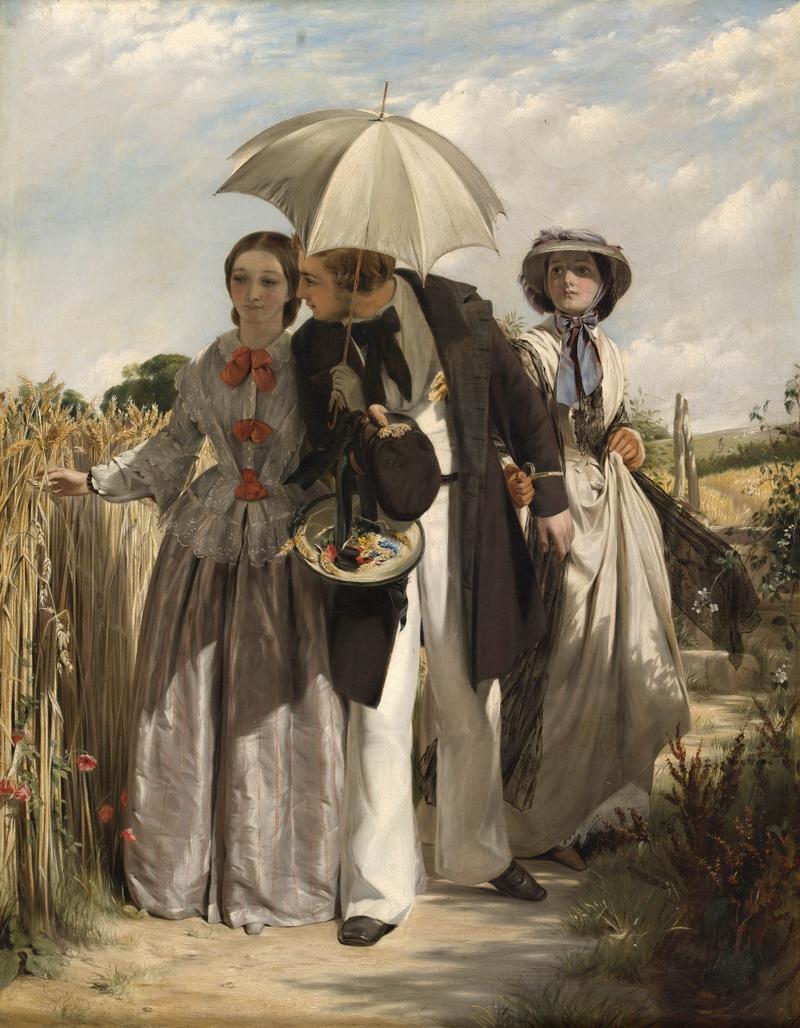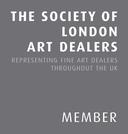Showing a Preference

Recently Exhibited
Watts Gallery - Artists’ Village, Compton, Untold Stories: Pictures from Private Collections, November 2016 to February 2017.Additional Exhibition History
London, Arts Council of Great Britain (organised to mark the Coronation of Queen Elizabeth II), (held at New Burlington Galleries, London; Mappin Gallery, Sheffield; Southampton Art Gallery), British Life, 1953, no. 31London, Foyles Art Gallery, Painters of the Victorian Scene, 1953, no. 21
London, Agnew (in co-operation with the Victorian Society), Victorian Painting 1837-1887, 1961, no. 32
Aldeburgh Festival, 1962
London, Arts Council of Great Britain (held at Walker Art Gallery, Liverpool and Cannon Hall, Barnsley), Victorian Painting, 1962, no. 25
Ottawa, National Gallery of Canada, Victorian Exhibition, 1965, no. 56
Sheffield, Mappin Art Gallery, Victorian Painting, 1968, no. 66
London, Royal Academy of Arts, Bicentenary Exhibition, 1968-69, no. 384
Edinburgh, National Gallery of Scotland, Sunshine and Shadow - The David Scott Collection of Victorian Paintings, 1991, no. 19
On loan to Cambridge, Fitzwilliam Museum, 2007 to 2008
Mr Horsley’s naval lieutenant (H.M.S. Trifler) is “showing a preference” in a very indiscreet and decided manner. The very poppies hang their heads in shame.’ Punch (responding to the 1860 Royal Academy exhibit)
In this work and others of his oeuvre, Horsley successfully depicts tight psychological narratives, incorporating figures who outwardly show a quiet, almost inscrutable, self-possession but whose internal thoughts are hinted at. Here, Horsley chooses a subject that serves as a metaphor for the shallowness of male romantic feelings, as the officer jilts one woman in preference for another. He incorporates an elaborate system of symbolic motifs which are calculated to support the intended allegory. The left and right sides of the composition represent environments that are respectively bountiful and welcoming, and threatening and inhospitable.
The young woman on the right of the naval officer wears an oyster grey and pink silk dress, which is closed at the front with three carmine red bows; the bodice is covered with delicate lace. Her hair is demurely parted at the centre, and her expression is one of quiet, self-possession. She breaks off ears of wheat with her right hand which she collects in the crown of her upturned bonnet, which hangs by its ribbon from the man’s arm. Some sheafs protrude from the jacket of the officer as if he has already picked his prey. Horsley has manipulated the fall of light over the composition so that he and the woman are protected from the sun by the parasol that she holds which forms a crown over her and her suitor’s head, in the shadow of which their faces may be seen to conjoin intimately, shutting them off from the other woman. The quality of shaded light appears to bring colour to her cheeks, making her look young and healthy. The neglected companion is unguarded from the light, and her face seems pallid and tense as the sun casts shadow over her eyes under the brim of her hat. Her hat conceals her hair and the mauve ribbon tied in a neat, taut bow at her neck completes the containment of her head in a tight sphere, symbolic of her isolation. The shadows that fall on the two women’s skirts are each of a different kind: the one who is favoured has a neat zig-zag pattern cast by the flapping wings of the man’s frock-coat; while the other’s skirt shows a sinister edge of invading vegetation.
The favoured woman does not seem to encourage or respond to the officer’s advances and with somewhat tight, almost pursed lips, she endures his attention. She walks next to an abundant field of wheat - a symbol of forthcoming fruitfulness; while the girl who is not admired is seen to have passed a field of corn already harvested. Her clothing also suggests this allusion as she wears a black lace shawl indicative of loss or mourning, perhaps that of a family member, husband or lover. She now finds herself alone. She seeks to retain her hold on the officer’s slack arm, as she wistfully gazes wide-eyed at the back of his head. She is left to walk alone as he heedlessly turns away from her, lifting her skirts to avoid the long grass as she is pulled off the course of the path, her shawl snagged by brambles.
The allegory was clearly understood by contemporary commentators. Punch issued a commentary on the subject: ‘Mr Horsley’s naval lieutenant (H.M.S. Trifler) is “showing a preference” in a very indiscreet and decided manner. The very poppies hang their heads in shame’. These poppies and the red bows on the chosen woman’s bodice, serve to echo the brightness of colour in her lips and cheeks. Poppies, long a symbol of sleep and oblivion in the Victorian language of flowers because of their narcotic association with opium and laudanum, give the suggestion of a comforting sleep followed by death, intimating a promised pleasure, but, in fact, delivering anguish and pain.
It has been suggested that Horsley may have had in mind treatments of the subject of The Choice of Hercules when devising the present composition. According to that familiar pictorial convention, two paths are offered, one of which must be chosen, and which represent alternatives of virtuousness or sinful indulgence. The painting has something of an iconic status among Victorian paintings which have become synonymous with that period equal to such works as A. L. Egg’s Travelling Companions (1862, Birmingham Museum and Art Gallery), Alfred Elmore’s On the Brink (1865, Fitzwilliam Museum) and Sophie Anderson’s No Walk Today (The Lord Lloyd-Webber Collection).



